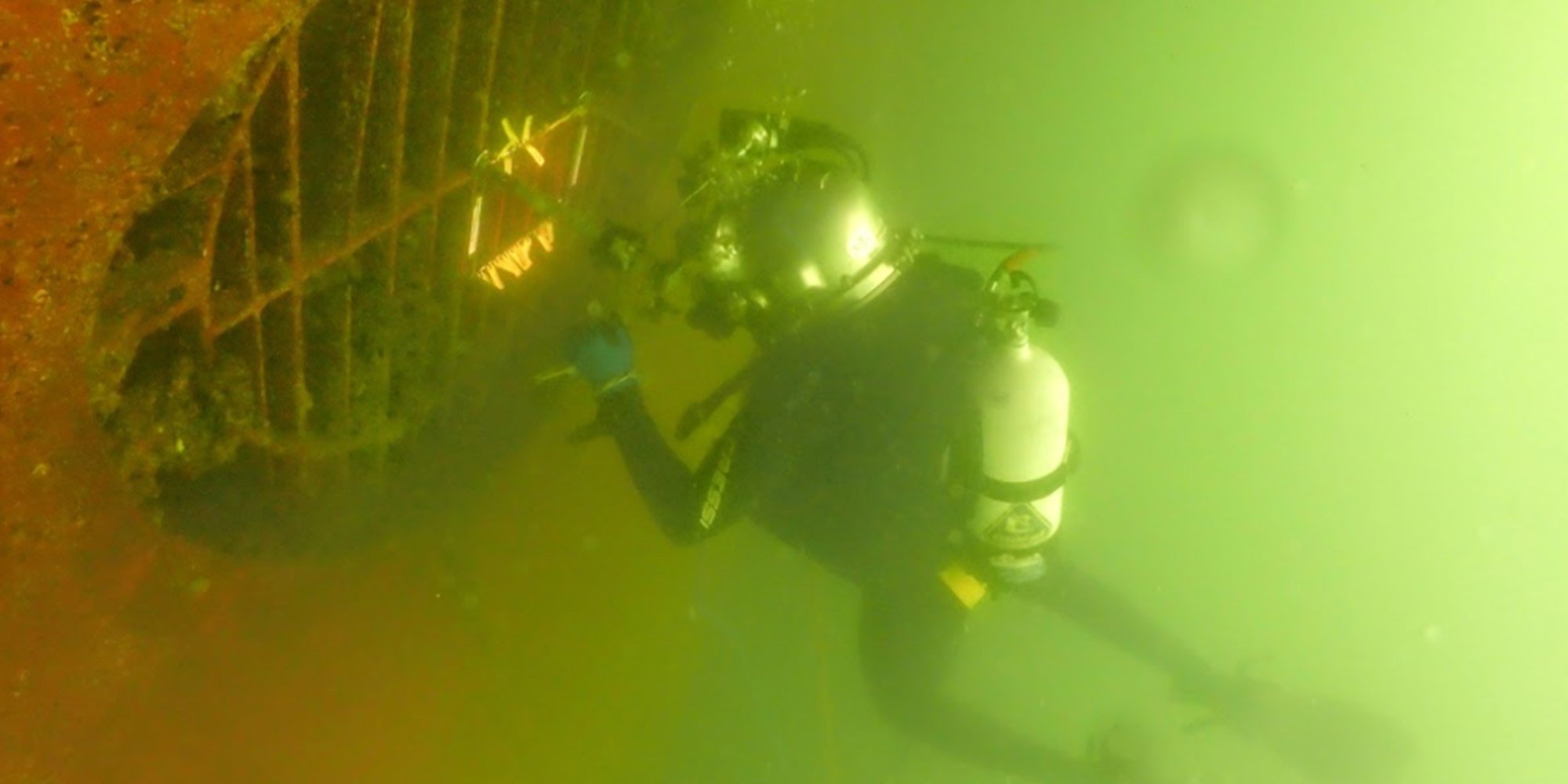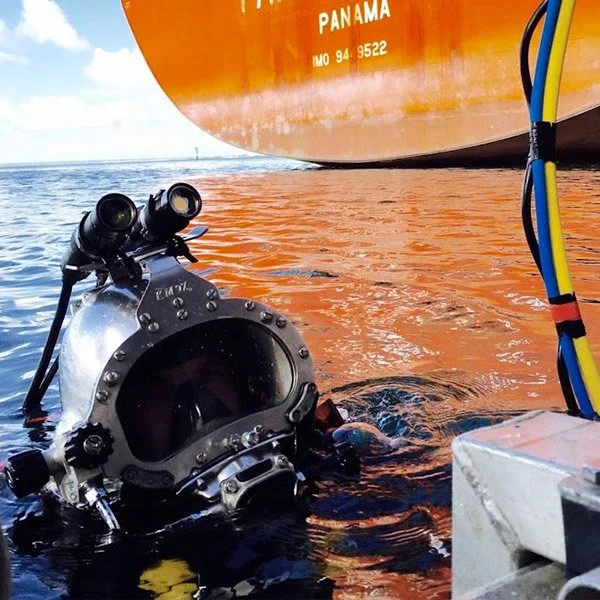Exploring the Depths: Understanding Commercial Diving
One of Aegir Divers team members doing what they love best, blowing bubbles.
Commercial diving is one of those careers that sounds a bit like something out of a James Bond movie. Picture it: the ocean's depths, pressure so intense it can crush a person like a tin can, and yet, there are brave souls suited up and diving down deep to work on highly expensive and critical underwater structures. It’s one of the most thrilling, high-stakes, and technically demanding careers around. So, what does commercial diving really entail? Let’s dive in (pun intended) and take a look at what this exciting, slightly mysterious occupation is all about and hopefully, this will give you a better understanding of why Aegir Divers is so obsessed with what we do.
First of all:
What the heck is Commercial Diving?
Commercial diving is very different from the kind of diving you might immediately think of such as Scuba Steve, or Claude, the ‘Unofficial Scuba King of St Barts’. It’s diving for work.
These divers are trained professionals who head underwater for jobs that are crucial to industries like construction, maintenance, exploration, and environmental research, and so much more. So instead of just splashing around looking at fish and such, these commercial divers are inspecting bridges, fixing oil rigs, maintaining navigation aids and sometimes even saving the day when a problem pops up 50 metres below sea level.
Commercial divers also generally find themselves in areas where you would never find a Scuba Diver. Busy ports and harbours, in cold, green or even muddy waters where the only way to see is to use your finger tips or as commercial divers call it, ‘your 10 eyes.’ So it goes without saying that commercial divers work in very challenging conditions and rely on their skills to not only get the job done but keep themselves and their team safe. Their gear is also more complex; big, heavy, high-tech helmets, heavy-duty suits, and a communication system that ensures they can communicate to the surface team who support the divers work below.
The Work of a Commercial Diver
Aegir Divers commercial divers are like the Swiss army knives of the underwater world. We’re skilled in everything from construction to environmental research, salvage, and more. Here’s a glimpse of what we get up to:
Underwater Construction: If you’ve ever wondered who helps build underwater structures, inspects and maintains our potable drinking water tanks or repairs the foundations of a bridge, all submerged in water, its commercial divers, like us. We often work with heavy machinery to lift and shift heavy components, install foundations for underwater structures or fix damaged components and perform general maintenance procedures. Think of it as general construction work, but underwater with a much cooler helmet than a hard hat.
Underwater Welding and Cutting: Now this is where things get fancy. Underwater welding and cutting is basically like using fire underwater (not where you would typically find flames) on metal structures. With the help of these specialised tools, we can cut metal parts deep underwater or secure a range of attachments or apply structural repairs, temporary or permanent, always looking cool whilst doing it.
Marine Surveying and Inspection: Dive in, take a look, and report back—commercial divers are also inspectors of the deep. We assess and test the condition of underwater structures like ships and wharves, checking for damage caused by corrosion, physical wear or even marine life (yes, apparently marine organisms love to eat on timber and even metal!). Our job helps prevent underwater catastrophes, which is, you know, pretty important.
Environmental Research and Monitoring: Commercial divers also help researchers with monitoring marine ecosystems and studying pollution effects on the ocean. We collect the underwater data on sediments, fish populations and the general health and water quality of our marine ecosystems. We’re like the ocean’s unofficial guardians —monitoring and helping protect the underwater world one dive at a time, which is why we love the name Aegir Divers. (Ps. If you’re curious about why the Aegir name is so suitable, check out the reason here)
Skills and Training Required for Commercial Diving
Becoming a commercial diver isn’t as simple as, “Hey, I can swim. Let’s go dive!” It requires a lot of training, learned skill and a fair amount of bravery. Here's what you need to be a top-notch commercial diver:
Diving Techniques: You need to be an expert in buoyancy control, navigating underwater, and performing emergency procedures.
Technical Skills: Besides being a pro at diving, commercial divers need to know how to use a huge variety of specialised tools to perform the variety of work. So, if you’re good with a welding torch and like working with your hands, you’ll be right at home fixing stuff under the sea.
Physical and Mental Stamina: You don’t have to be a superhero, but it helps to be in shape. Commercial diving is physically demanding, requiring fitness and the ability to stay calm under pressure. And let’s face it, handling all that equipment while staying calm is no easy feat.
Safety Training: Commercial diving isn’t a “just wing it” sort of job. Safety is the number one priority. Divers undergo extensive training on how to deal with emergencies, handle equipment malfunctions, and avoid getting trapped underwater with the odd curious shark. (Don't worry, they're usually more scared of you than you are of them.)
Certification: To be a certified commercial diver, you’ll need the right qualifications. Certifications from organisations like the Australian Diver Accreditation Scheme (ADAS) ensure that you know your stuff and can safely handle the risks of the job.
But… is it Always Smooth Sailing?
Commercial diving sounds awesome, and absolutely IS, but it doesn’t come without its challenges. Here are some of the hurdles commercial divers can face:
Pressure and Depth: The deeper you go, the more pressure your body is under. It’s like being trapped in a giant soda can. We need to ensure that all of our divers are thoroughly trained and know how to handle these high-pressure environments to avoid any unpleasant accidents. Remember, this is high risk work, and with high risk has to come an equally high level of training.
Limited Visibility: Underwater visibility isn’t always great. Sometimes you can’t even see anything! Thankfully, our divers have lights, cameras, and other tools to help us navigate and get the job done without bumping into too many things.
Dangerous Environment: The ocean is a beautiful but dangerous place. From the obvious inability to breathe underwater, to the swells that can whip you around like a ragdoll, commercial divers work in some pretty risky situations. But hey, no risk, no reward, right?
Time Constraints: The pressure of deadlines can be daunting, no matter how far underwater you are. We are there to perform a job for a client and that often comes with strict deadlines. Commercial divers often need to work quickly and efficiently while keeping safety top of mind. After all, it isn’t exactly quick and easy to pop up to the surface for a coffee break!
Why we are Proud as Punch to be Divers
Commercial diving is an extraordinary and demanding career that combines technical expertise, physical endurance, and a love of water and adventure. It isn’t just about swimming with dolphins, avoiding sharks or looking incredibly cool in a wetsuit and helmet (which we do)— we play a vital role in industries like shipping, ports, marinas, bays, regional water ways including lakes, rivers and reservoirs, keeping our public assets and local marine environments safe and healthy.
So, the next time you hear or see divers in your local waters, remember: they might not just be exploring marine life—they could be commercial divers, inspecting submerged structures for safety, maintaining underwater equipment, or furthering the understanding of our environment. We might not have movies made about us, but we are super proud that what we do ensures everything below the surface stays in tip top shape.










